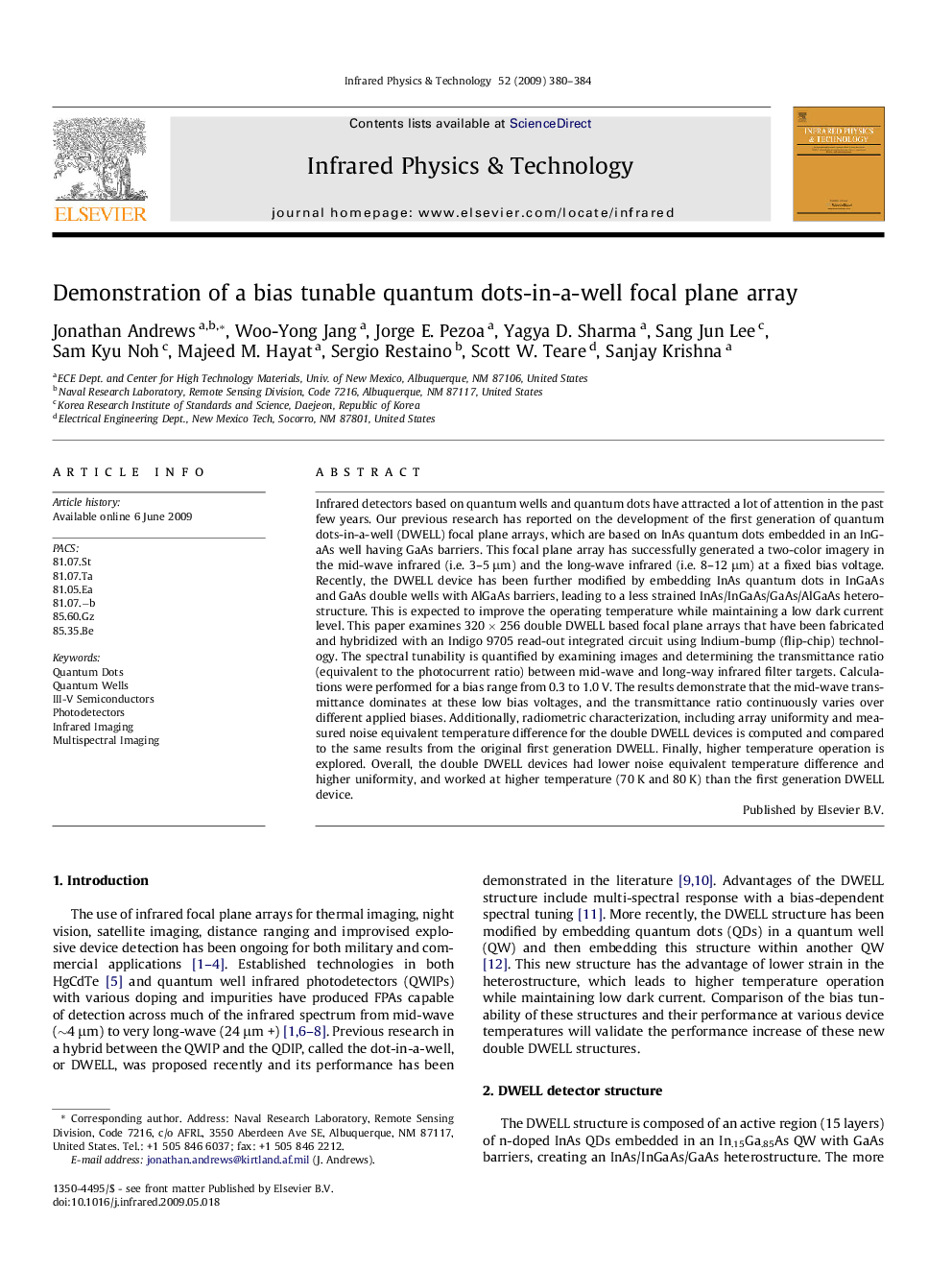| کد مقاله | کد نشریه | سال انتشار | مقاله انگلیسی | نسخه تمام متن |
|---|---|---|---|---|
| 1785028 | 1023291 | 2009 | 5 صفحه PDF | دانلود رایگان |

Infrared detectors based on quantum wells and quantum dots have attracted a lot of attention in the past few years. Our previous research has reported on the development of the first generation of quantum dots-in-a-well (DWELL) focal plane arrays, which are based on InAs quantum dots embedded in an InGaAs well having GaAs barriers. This focal plane array has successfully generated a two-color imagery in the mid-wave infrared (i.e. 3–5 μm) and the long-wave infrared (i.e. 8–12 μm) at a fixed bias voltage. Recently, the DWELL device has been further modified by embedding InAs quantum dots in InGaAs and GaAs double wells with AlGaAs barriers, leading to a less strained InAs/InGaAs/GaAs/AlGaAs heterostructure. This is expected to improve the operating temperature while maintaining a low dark current level. This paper examines 320 × 256 double DWELL based focal plane arrays that have been fabricated and hybridized with an Indigo 9705 read-out integrated circuit using Indium-bump (flip-chip) technology. The spectral tunability is quantified by examining images and determining the transmittance ratio (equivalent to the photocurrent ratio) between mid-wave and long-way infrared filter targets. Calculations were performed for a bias range from 0.3 to 1.0 V. The results demonstrate that the mid-wave transmittance dominates at these low bias voltages, and the transmittance ratio continuously varies over different applied biases. Additionally, radiometric characterization, including array uniformity and measured noise equivalent temperature difference for the double DWELL devices is computed and compared to the same results from the original first generation DWELL. Finally, higher temperature operation is explored. Overall, the double DWELL devices had lower noise equivalent temperature difference and higher uniformity, and worked at higher temperature (70 K and 80 K) than the first generation DWELL device.
Journal: Infrared Physics & Technology - Volume 52, Issue 6, November 2009, Pages 380–384